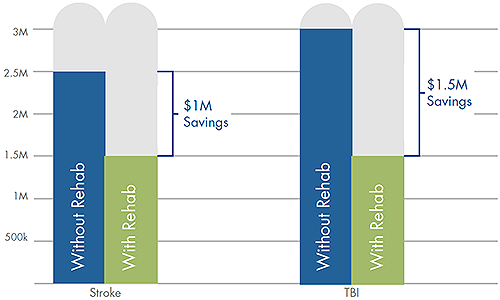Narconon Africa Fundamentals Explained
Narconon Africa Fundamentals Explained
Blog Article
8 Simple Techniques For Narconon Africa
Table of ContentsIndicators on Narconon Africa You Should KnowSome Known Facts About Narconon Africa.Narconon Africa Fundamentals ExplainedWhat Does Narconon Africa Mean?Facts About Narconon Africa Revealed3 Simple Techniques For Narconon AfricaNarconon Africa - Questions
In a collection of papers with Manudeep Bhuller and Katrine V. Lken, we get over these information obstacles and the nonrandomness of imprisonment, using new understandings into exactly how imprisonment impacts relapse, employment, kids, and criminal networks - Global rehab network. Figure 1 Our work studies the impacts of incarceration in Norway, a setting with two crucial advantagesWe can further connect this details to other member of the family, including children and siblings. Moreover, we know on co-offending that allows us to map out criminal networks for observed criminal offenses. Second, we can utilize the arbitrary assignment of criminal instances to judges who vary in their propensities to send out accuseds to jail.
However some courts send defendants to prison at a high rate, while others are much more lax. We determine a court's stringency as the average imprisonment price for all other cases a court deals with, after controlling for court and year fixed impacts, which is the level of arbitrary task. This quasi-random task of judge stringency can be used as an instrument for incarceration, as it strongly forecasts the judge's decision in the existing situation, but is uncorrelated with various other situation attributes both by style and empirically.
Not known Details About Narconon Africa
Features of prisoners, consisting of demographics and criminal activity classifications, are broadly comparable in Norway and various other countries, including the United States, with the exceptions that the United States homicide rate is a lot greater, and race plays a bigger function there. What attracts attention as various, especially compared to the USA, is the prison system.
Number 2In Norway, the typical time invested behind bars is a little over 6 months, which resembles most other Western European nations. This contrasts with typical United States jail time of practically 3 years, which remains in huge part the reason the USA is an outlier in its imprisonment price compared to the remainder of the world [Figure 1]
Rumored Buzz on Narconon Africa
This gives a lot more splitting up between small and hard crooks than exists in the United States. There is no overcrowding in Norwegian prisons and much better personal security, with each prisoner being designated to their own cell and a higher inmate-to-staff proportion than in the USA (https://www.huntingnet.com/forum/members/narcononza12.html). Prisons in Norway likewise supply well-funded education, medicine therapy, psychological health, and task training programs
Our study on the results of incarceration on the transgressor, using the arbitrary assignment of judges as an instrument, yields three crucial findings. First, imprisonment prevents further criminal behavior. We discover that incarceration decreases the likelihood that a person will certainly reoffend within 5 years by 27 percent factors and lowers the corresponding number of criminal fees per person by 10 costs.
See This Report on Narconon Africa
We discover large decreases in reoffending likelihoods and collective billed criminal activities also after defendants are released from prison. Our second result is that bias due to selection on unobservable specific characteristics, if overlooked, brings about the incorrect final thought that time spent behind bars is criminogenic. If we simply compare criminal defendants sent out to jail versus those not sent out to prison, we find favorable organizations between incarceration and succeeding crime.
This stands in contrast to our evaluation based on the arbitrary project of courts, which discovers an opposite-signed outcome. Third, the reduction in criminal activity is driven by individuals who were not functioning prior to incarceration. Amongst these people, jail time boosts involvement in programs guided at improving employability and minimizing recidivism, and this inevitably raises employment and revenues while inhibiting criminal actions.

Jail time causes a 34 percentage factor rise in involvement in job training programs for the previously nonemployed, and within 5 years their employment rate increases by 40 percentage factors. At the exact same time, the possibility of reoffending within 5 years is cut by 46 portion points, and there is a decline of 22 in the ordinary number of criminal fees.
Getting The Narconon Africa To Work

A plausible explanation for the distinction is that Norway's jail system differs noticeably, both in terms of prison-term size and prison problems, from the United States prison system. While understanding the impacts of imprisonment on the transgressor is a vital primary step, recording spillover impacts is additionally important go to the website for examining criminal justice policy and making effective prison systems.
Some Of Narconon Africa

Average least squares approximates disclose that youngsters of incarcerated daddies are 1 percentage point much more most likely to be charged with a criminal activity, about a mean of 13 percent, and reveal no result on school qualities. Utilizing our court stringency tool, we locate no analytical evidence that a papa's incarceration affects a youngster's own crime or college grades, yet we are unable to rule out modest-sized effects.
Not known Incorrect Statements About Narconon Africa
We define criminal groups based upon network web links to prior criminal cases. Our evaluation returns three main searchings for. Initially, when a criminal network member is incarcerated, their peers' possibility of being billed with a future criminal offense reduces by 51 percentage points over the following 4 years. Also, having an older sibling incarcerated reduces the probability his younger sibling will certainly be billed with a criminal offense by 32 percentage points over the following four years.
Report this page